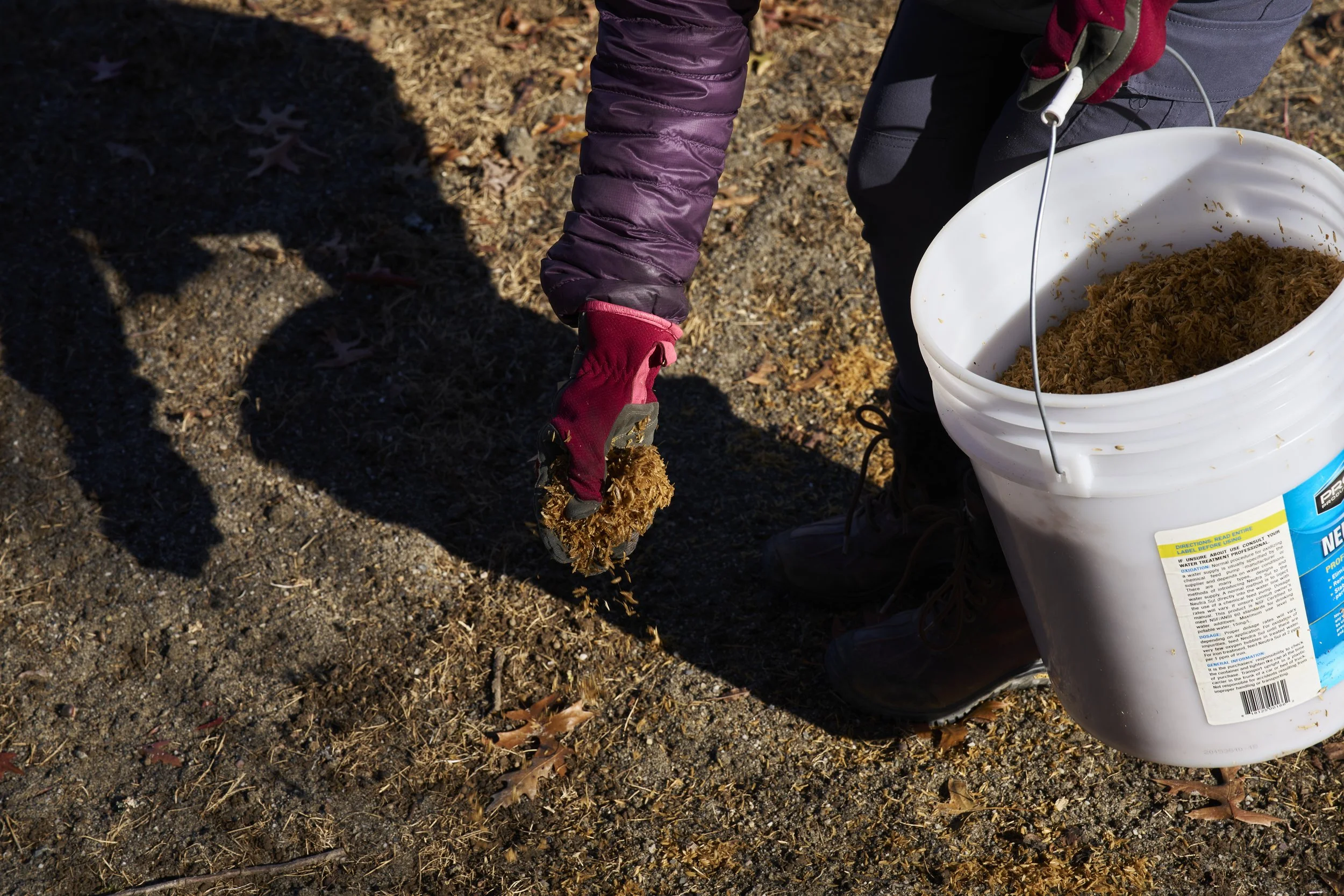INSTALL YOUR PROJECT
Planting: Best Practices Meadow Seeding Methods Cover Crops in Meadows Seeding: Hand-Broadcasting Seeding: Drilling Deer-Proofing
Meadow Seeding Methods
Native seeds can be tiny – as small as a speck of dust. Even larger native seeds, like those of grasses, are often incredibly light and fluffy. In a meadow seed mix, seeds of many different sizes and weights are blended together and planted simultaneously. With sizes and shapes that are so different from large, homogenous agricultural seeds like corn and soy, native seeds require special considerations to ensure successful planting.
We recommend two methods of installing seeded meadows, depending on the size of the area to be seeded.
Hand-Broadcasting: small spaces: lawn-to-meadow conversions and fields up to 1 acre
Native Seed Drilling: larger spaces, agricultural and hayfield conversions
Hand-broadcasting seeds. Credit: PCA
Timing: The best time to seed a native meadow using either method is late fall, after the growing season has ended.
Fall seeding allows the freeze-thaw cycles of winter to work the surface-sown seed down into the soil and create the seed-to-soil contact needed for germination in spring.
Fall seeding ensures that any seeds in the mix that need a cold period to trigger spring germination (stratification) will be exposed to the right conditions.
Fall-sown seeds receive water in the form of rain and snow during winter and spring, setting up the best conditions for germination and growth.
If fall seeding is not possible, both seeding methods can also be carried out in winter, spring, or summer, although meadows may take longer to establish. Be aware that spring- and summer-seeded meadows may also be water-stressed in dry years.
Cover crops are recommended with every meadow seeding to prevent erosion (soil loss) over the winter after fall seeding, and to help suppress weed growth during the first growing season. Learn how to add cover crops to your project here.

